Different Types of Hair Systems
There are several different types of hair systems, also known as hair replacements or wigs, that are available.
Hair systems can be categorized from different angles. In this min-guide to the break down the different types of hair systems, we break down the following:
- Men’s VS women’s hair systems
- Stock VS custom VS preset hair systems
- Skin vs lace VS mono hair systems
Men’s VS Women’s Hair Systems
Hair systems for men and women can differ in a few key ways:
- Base Size and Shape: Women's hair systems typically have a larger base size than men's systems because more often than not they are full-cap wigs (i.e. they stretch past the nape), as women's hair loss patterns often start at the crown or part line rather than the hairline. Men’s hair systems are mostly toppers or small patch hair systems, because men tend to lose hair entirely in a particular spot, whereas women tend to thin all over. Some women with extreme hair loss will opt for women’s toppers, which are the same as men’s toppers, just with longer hair.
- Base material: The base material on men’s and women’s toppers (that are hairpieces of 8x10” or smaller) tends to be made of either lace, polyurethane or monofilament. Women’s wigs often have a lace material at the front, and feature wefting at the back.
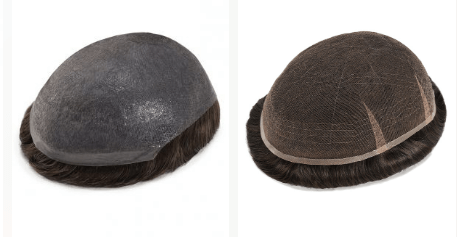
Skin base vs lace base
- Hair Density: Women's hair systems may have a lighter density of hair than men's systems. This is because women's natural hair tends to be finer and thinner than men's hair.
- Hair Type: The type of hair used in a hair system can vary depending on gender. Men's hair systems typically use coarser hair, while women's systems may use finer hair that matches their natural hair texture.
- Hairstyle Options: Women's hair systems may allow for more styling options, including longer hair lengths and more varied hairstyles. Men's hair systems may be designed for a more specific hairstyle, such as a short, professional cut.

- Attachment Methods: The attachment methods used for men's and women's hair systems can also differ. Men's systems may use adhesives such as glue or tape to secure the system, occasionally being attached with clips, while women's systems may often use clips and occasionally use adhesives, as they require shaving hair, women are often more resistant due to the nature of their hair loss pattern.
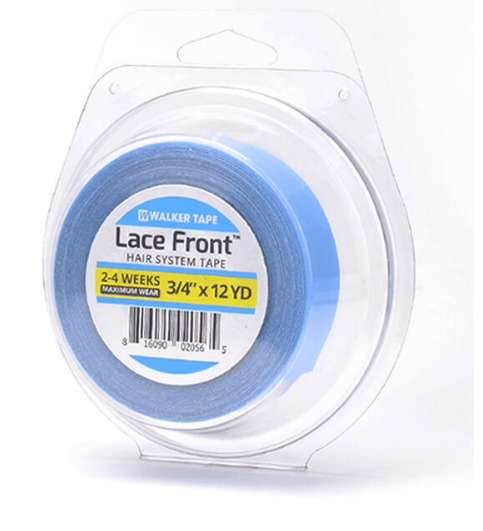
Ultimately, the specific features of a hair system will depend on the individual's preferences and the extent of their hair loss. It's important to work with a professional to select the right hair system that fits your unique needs and lifestyle. A female could absolutely sport a hair system traditionally marketed to men and vice versa.
Both men and women can wear a variety of hair systems, including:
1. Full Cap Wigs: Full cap wigs are designed to cover the entire head and are made from human hair. They are often used for fashion or cosmetic purposes, and can be found in a variety of styles, colors, and textures. Women tend to wear wigs with wefting, whereas men often wear wigs that are made of lace, skin or mono all the way down to the nape. Such men’s full cap wigs need to be custom made, whereas women’s full cap wigs can be bought off the shelf as wefting can stretch, whereas lace, skin or mono cannot.
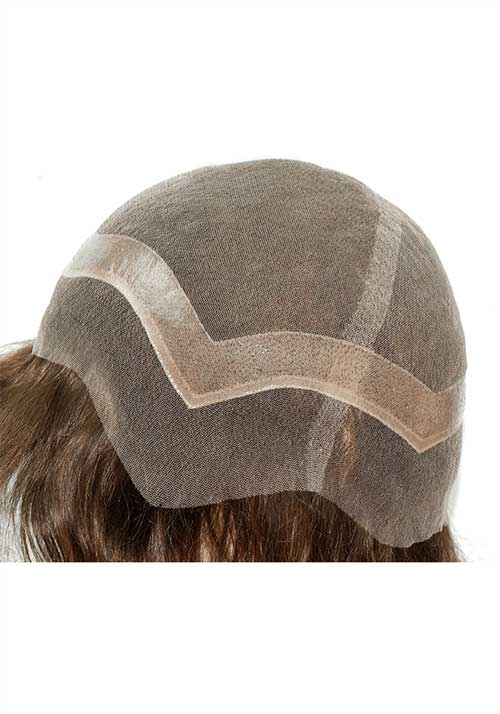
2. Hair Toppers: Hair toppers, also known as wiglets or top pieces, are designed to cover hair loss on the top of the head. They can be made from synthetic or human hair and are available in a variety of sizes, shapes, and colors. Both men and women wear these in varying lengths.
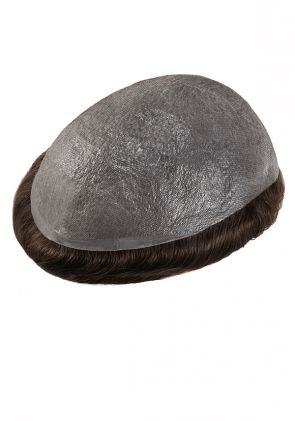
3. Hair Integration Pieces: Hair integration pieces are designed to be worn with existing hair to add volume, length, or coverage to areas of hair loss. They are often made from human hair and are attached using various methods, such as clips or adhesives. Women tend to wear these and are not marketed to men because women tend to have hair thinning all over, giving the wig something to grip onto. Men tend to have complete loss in certain areas, so there will be no hair for the integration wig to pull through. Integration wigs are also suited best to long hair.
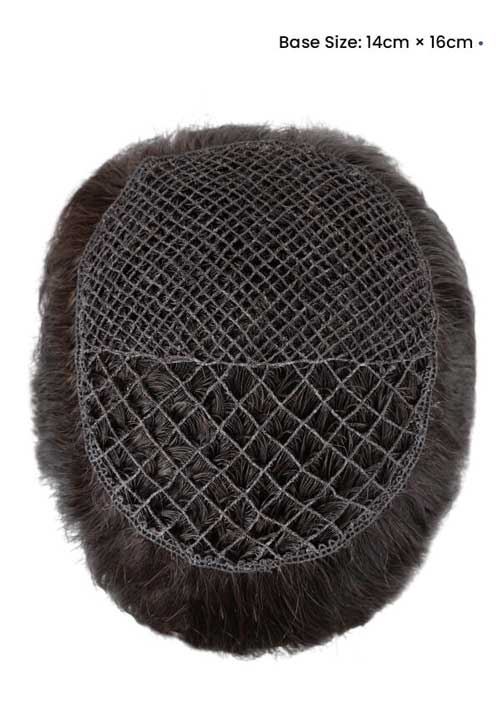
4. Frontal Hair Systems: Frontal hair systems are designed to cover hair loss at the hairline or front of the head. They are typically smaller than full cap wigs and may be attached using adhesives or clips.
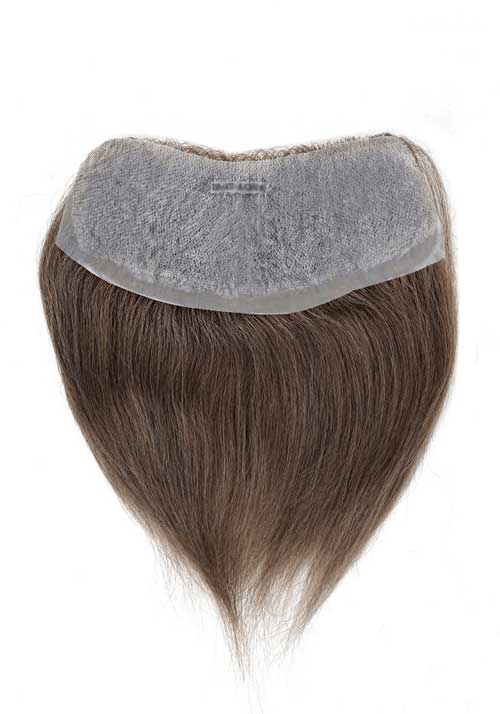
5. Medical Wigs: Medical wigs are designed for individuals who have lost their hair due to medical conditions or treatments, such as chemotherapy. They are typically made from high-quality human hair and are designed to be comfortable, breathable, and easy to wear. They cover the entire scalp and must be custom made. They are similar to full-cap wigs for men, however they cater primarily for women and use long hair.
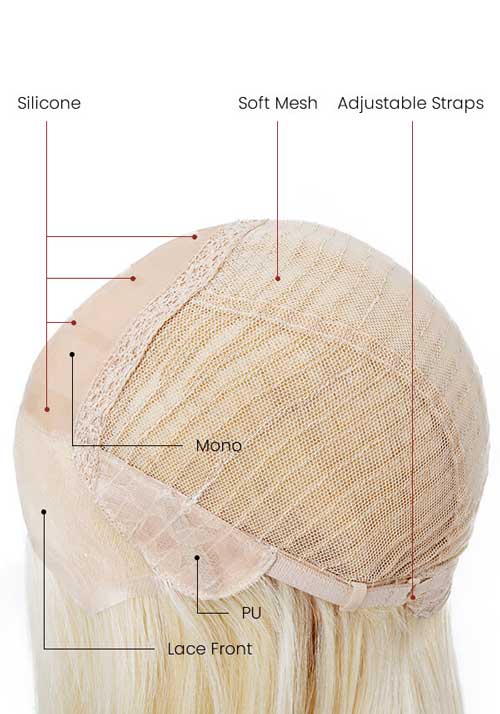
6. Hair Extensions: Hair extensions are designed to add length or volume to the wearer's natural hair. They can be made from synthetic or human hair and are attached using various methods, such as clips, tapes, or adhesives. They don’t add any volume to the crown, only to the ends. They can be paired with a women’s topper to really add natural-looking volume and health back to the head.
The type of hair system that a person chooses will depend on a variety of factors, including the extent and location of their hair loss, their preferences, and their budget. It's important to work with a professional to determine which type of hair system will work best for your individual needs.
|
Hair loss type/area |
Product Type |
Men’s products list |
Women’s product list |
||
|
Product available? |
Description |
Product available? |
Description |
||
|
Hair loss at the front of the head |
Frontal Hair System |
✅Frontal ✅Oversized frontal |
A hair system that is 1”-4” in length, for receding hairlines, glued or taped on scalp |
- |
- |
|
Hair loss and thinning on the top/crown |
Topper |
✅Men’s topper ✅Men’s hair patch ✅Men’s toupee ✅Men’s hair replacement |
A hairpiece that is 8-10” or less, glued or taped on |
✅Women’s topper ✅Women’s hair replacement |
A hairpiece that is 8-10” or less, women tend to clip, glue or tape on |
|
Integration Wig |
- |
- |
✅Women’s Integration Wig |
A wig with large netting, through which bio hair is pulled and integrates with wig |
|
|
Large hair loss or thinning down towards the nape of the neck |
Oversized Hair System |
✅Oversized Hair System |
A hairpiece that is 10-10” that covers the head down to the the temples |
- |
- |
|
Fully bald or extreme thinning all over |
Full Cap Wig |
✅ Men’s Full Cap Wig |
A hairpiece that covers the entire head, made of lace, skin or mono, usually taped or glued |
✅ Women’s Wig |
A wig that covers the entire head, often made up of a lace front and weft back, clipped on |
|
Medical Wig |
- (usually only referred to for women’s wigs) |
- |
✅ Women’s Medical Wig |
A wig that covers the entire head, often made up of a lace front and weft back, clipped on |
|
|
Too little volume at the ends of the hair |
Hair Extensions |
- |
- |
✅ Hair Extensions |
Tufts of hair that can be sewn into a long line, or be in small sections that are clipped into the scalp to create longer hair |
Stock VS Custom Hair Systems
There are two main types of hair systems: stock and custom. Here are some differences between the two:
- Stock Hair Systems: Stock hair systems are pre-made and come in standard sizes and colors. They are usually more affordable than custom hair systems and can be delivered quickly. However, they may not fit everyone perfectly, and the hair color and texture may not match the wearer's natural hair exactly.
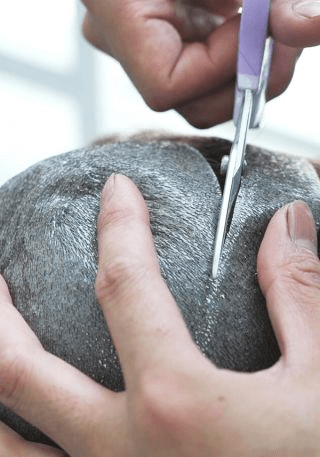
- Stock Hair Systems with Lordhair Add On Services: Stock hair systems with additional services are pre-made hairpieces, sitting and ready to ship, but can be “re-edited” and fine-tuned by taking the piece from the warehouse and making a few adjustments. These include;
- Cutting a hairstyle in
- Cutting the base down to fit your exact hair loss size
- Perming hair curly or Afro
- Thinning the hair system down
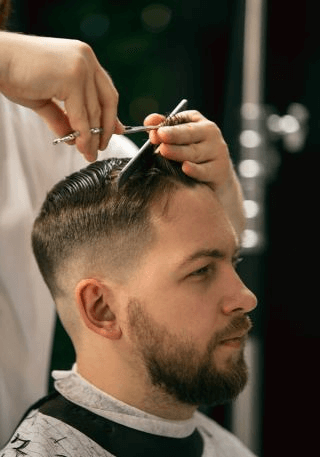
- Custom Hair Systems: Custom hair systems are made to the wearer's exact specifications. They are designed to fit the wearer's head size and shape, hairline, and hair density. The hair color and texture can also be matched to the wearer's natural hair. Custom hair systems are more expensive than stock systems, and they may take several weeks to be made.

- Quality and Durability: Custom hair systems are typically of higher quality and more durable than stock hair systems. Custom systems are made with higher quality materials and are designed to withstand regular wear and tear.
- Styling Options: Custom hair systems offer more styling options than stock systems. The wearer can choose the hair length, texture, and style, which can be customized to their preferences.
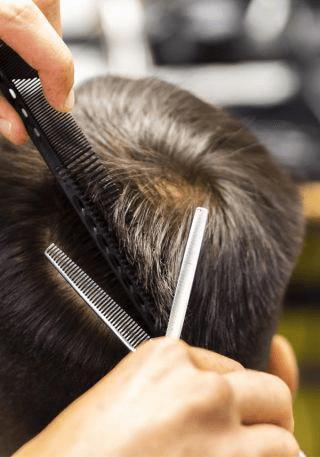
- Maintenance: Both stock and custom hair systems require regular maintenance to keep them looking their best. However, custom hair systems may require more maintenance since they are made specifically for the wearer's head and may require more attention to keep them in good condition.
Ultimately, the decision to choose a stock or custom hair system will depend on the wearer's budget, preferences, and the level of customization needed. It's important to work with a professional to determine which type of hair system will work best for your needs.
Here are some advantages and disadvantages of stock and custom hair systems:
Stock Hair System:
Advantages:
- Quick delivery: stock hair systems can be delivered quickly since they are already made.
- Affordable: stock hair systems are usually less expensive than custom systems.
- Variety: stock hair systems come in different colors, textures, and styles, so there are plenty of options to choose from.
Disadvantages:
- Fit: stock hair systems may not fit everyone perfectly, since they are not customized to the wearer's head shape and size.
- Limited styling options: the wearer may have limited options for styling the hair.
- Quality: stock hair systems may not be of the highest quality since they are mass-produced.
Custom Hair System:
Advantages:
- Perfect fit: custom hair systems are made to the wearer's exact specifications, so they fit perfectly and feel comfortable.
- Customization: the wearer can choose the hair length, texture, and style, which can be customized to their preferences.
- Natural-looking: custom hair systems can look very natural since they are made to match the wearer's natural hair.
Disadvantages:
- Expensive: custom hair systems are usually more expensive than stock systems.
- Longer delivery time: custom hair systems may take several weeks to be made, so the wearer may need to wait longer for delivery.
- Maintenance: custom hair systems may require more maintenance to keep them looking their best.
Overall, the decision to choose a stock or custom hair system will depend on the wearer's budget, preferences, and the level of customization needed. It's important to work with a professional to determine which type of hair system will work best for your needs.
Men's Hair Systems Basic Features:
Here are some differences between full cap wigs, oversized hair systems, regular-sized hair systems, and frontal hair systems:
- Full Cap Wigs: Full cap wigs are designed to cover the entire head and are usually made from human hair. They are made with lace, thin skin or mono and stretch down to the nape. Full cap wigs for men are designed to be able to be worn during activities like swimming or exercise.
- Oversized Hair Systems: Oversized hair systems are designed to cover a larger area of hair loss than regular-sized hair systems. They may be used to cover hair loss on the entire top of the head down to the sides. They may be more expensive than regular-sized hair systems and may require more maintenance.
- Regular-Sized Hair Systems: Regular-sized hair systems are designed to cover a specific area of hair loss, such as the crown or top of the head. They are smaller than full cap wigs and have a round shape. These hair systems may be attached using adhesives or clips.
- Frontal Hair Systems: Frontal hair systems are designed to cover hair loss at the hairline or front of the head. They are typically smaller than regular-sized hair systems and may be attached using adhesives or clips. They offer a more natural look and feel than full cap wigs, and they may be more affordable than oversized hair systems.
Ultimately, the choice between a full cap wig, oversized hair system, regular-sized hair system, or frontal hair system will depend on the extent and location of the wearer's hair loss, their preferences, and their budget. It's important to work with a Lordhair personal consultant to determine which type of hair system will work best for your needs. You can contact us at support@lordhair.com.
Skin vs Lace VS Mono Hair Systems Advantages & Disadvantages
Skin, lace, and mono hair systems are all types of hair replacement systems used by people who experience hair loss. Each of them has its advantages and disadvantages.
Skin Hair Systems:
Skin hair systems are made of a thin, transparent layer of polyurethane material. The material is shaped to fit the wearer's scalp and is designed to mimic the appearance of natural skin. Advantages of skin hair systems include:
Advantages:
- They are highly durable and can last for a long time with proper maintenance.
- They offer a natural-looking hairline that is virtually undetectable.
- They are easy to attach and remove.
- They are low-maintenance and require little upkeep.
Disadvantages:
- They can be uncomfortable to wear in hot weather.
- They can be difficult to clean if they are too thin (0.03mm Lordhair UTS is usually removed and replaced each month, not cleaned).
- They may require frequent replacement as the skin material can become damaged over time - however lace has a similar lifespan.
Lace Hair Systems:
Lace hair systems are made of a fine, sheer mesh material that is designed to mimic the appearance of natural hair. The mesh material is typically made of either French or Swiss lace. Advantages of lace hair systems include:
Advantages:
- They are very lightweight and comfortable to wear.
- They offer a natural-looking hairline that is virtually undetectable.
- They are highly breathable and allow for good air circulation on the scalp.
- They are easy to attach and remove.
Disadvantages:
- They are delicate and can easily become damaged if not properly cared for.
- They require more frequent maintenance than other types of hair systems as the holes can get clogged up with glue more easily.
- Glue doesn’t do well with lace - tape is best.
Mono Hair Systems:
Mono hair systems are made of a thin, breathable fabric material that is designed to mimic the appearance of natural hair. The material is typically made of either silk or nylon. Advantages of mono hair systems include:
Advantages:
- They are highly durable and can last for a long time with proper maintenance.
- They are highly breathable and allow for good air circulation on the scalp.
- They are easy to attach and remove.
Disadvantages:
- They may require more frequent maintenance than other types of hair systems.
- They may be more difficult to attach than other types of hair systems.
- They are less natural than other hair systems.
- They may be more expensive than other types of hair systems.
Overall, the choice of a hair replacement system is a personal decision that depends on individual preferences and needs. It is important to consider the advantages and disadvantages of each type before making a decision.
Women's hair systems:
Here are some differences between full cap wigs, medical wigs, hair toppers, hair integration pieces, and hair extensions:
1. Full Cap Wigs: Full cap wigs are designed to cover the entire head and can be made from synthetic or human hair. They are often used for fashion or cosmetic purposes and are available in a wide variety of colors, styles, and textures. Full cap wigs have wefting and are not designed for medical purposes, but they can be worn by individuals experiencing hair loss due to medical conditions or treatments.
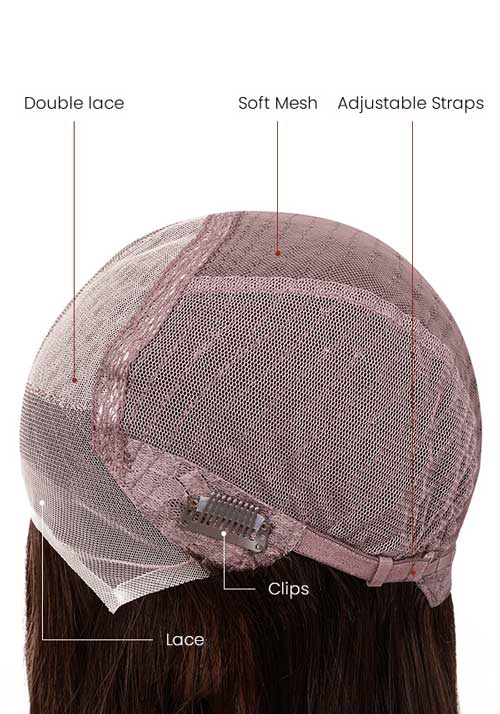
2. Medical Wigs: Medical wigs are designed for individuals who have lost their hair due to medical conditions or treatments, such as chemotherapy. They are typically made from high-quality human hair and are designed to be comfortable, breathable, and easy to wear. Medical wigs are often custom made to ensure a perfect fit and a natural look.
3. Hair Toppers: Hair toppers, also known as wiglets or top pieces, are designed to cover hair loss on the top of the head. They are made from human hair and are available in a variety of sizes, shapes, and colors. Hair toppers can be attached using clips or other methods and are typically less expensive than full wigs.
4. Hair Integration Pieces: Hair integration pieces are designed to be worn with existing hair to add volume, length, or coverage to areas of hair loss. They are often made from human hair and are attached using various methods, such as clips or adhesives. Hair integration pieces can be customized to match the wearer's natural hair color and texture.
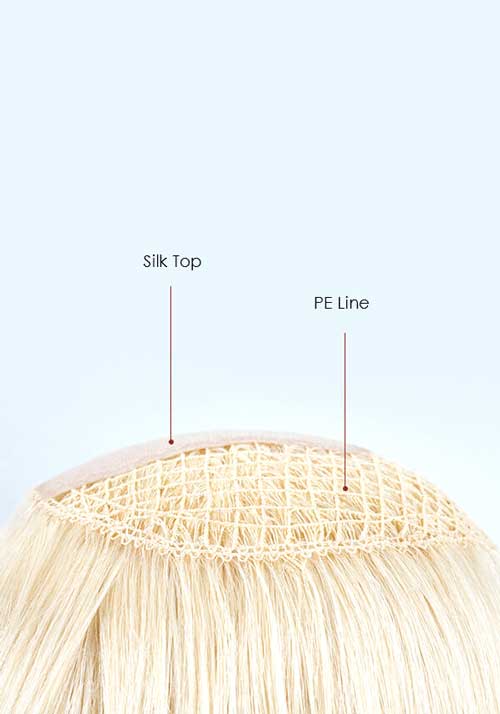
5. Hair Extensions: Hair extensions are designed to add length or volume to the wearer's natural hair. They can be made from synthetic or human hair and are attached using various methods, such as clips, tapes, or adhesives. Hair extensions can be customized to match the wearer's natural hair color and texture.
Women’s Toppers VS Integration Wigs
Women's toppers and integration wigs are both popular options for women who experience hair loss or thinning hair. While they are similar in some ways, there are some key differences between the two.
Women's Toppers:
Women's toppers, also known as hair toppers, are partial hairpieces that are designed to cover the top of the head where hair loss or thinning is most noticeable. Toppers are typically secured to the existing hair using clips or combs, and they come in a range of sizes and styles to match the wearer's natural hair. They are often made of lace, skin, mono or silk top.
Advantages of women's toppers include:
Advantages:
- They provide a natural-looking solution for hair loss or thinning.
- They are lightweight and comfortable to wear.
- They are easy to attach and remove.
- They are low-maintenance and require little upkeep if clipped.
- They allow the wearer to keep their natural hair if clipped, which can be important for some people.
- They can be glued or taped to provide a close fit and mould to the head.
Disadvantages:
- They may not be suitable for those with more severe hair loss.
- They may require some skill to properly attach and blend with the natural hair.
- They may not be suitable for those who want a full hair replacement of the entire scalp.
Integration Wigs:
Integration wigs, also known as integration systems or integration hairpieces, are full wigs that are designed to blend in with the wearer's natural hair. The base of the wig is made of a thin, breathable material that allows the wearer's natural hair to be integrated into the wig. The natural hair is pulled through small openings in the base of the wig, creating a seamless blend.
Advantages of integration wigs include:
Advantages:
- They provide a natural-looking solution for hair loss or thinning.
- They are highly customizable and can be tailored to the wearer's preferences.
- They can be worn for extended periods of time, including during physical activities such as swimming or exercising.
Disadvantages:
- They may be more complex to attach and require more skill than women's toppers.
- They may require salon fittings and regular maintenance appointments.
- They may require more maintenance than women's toppers.
- They may be more expensive than women's toppers.
Overall, the choice between a women's topper and an integration wig depends on individual preferences and needs. Women's toppers are a good option for those with mild to moderate hair loss, while integration wigs are better suited for those with more severe hair loss who want a full hair replacement. It is important to consult with a hair replacement specialist at Lordhair to determine which option is best for you. We are available at support@lordhair.com.